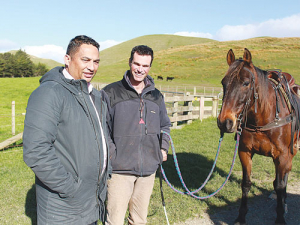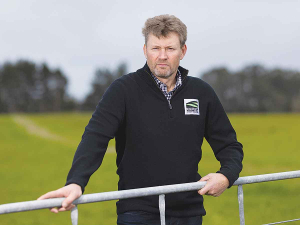Tautane is the scene of joint research into raising production, under the flag of the Ravensdown Primary Growth Partnership (PGP) ‘Pioneering to Precision’ scheme.
A map is transmitted to the plane, specifying blocks that do not need fertiliser. The computer-controlled hopper doors automatically cut the fertiliser flow when the plane is over those areas, and a map is produced that verifies spread and non-spread areas.
A recent field trial at Tautane produced a variable-rate proof-of-placement map.
Tautane is a 3374ha hill country station on the east coast of the North Island, owned by Ngāti Kahungunu. The iwi, in partnership with Taratahi agricultural training centre, joined the Ravensdown research farm network in 2014.
Ngāti Kahungunu leader Ngāhiwi Toamona says important cultural values align with Ravensdown’s PGP technology.
“Our ancestor Kahungunu was an innovator and forward thinker so that’s where we want to be... sustainable and trading in the new world with sustainable practices.
“We’re for progress and Ravensdown’s PGP programme is putting Māori back into the forefront of farming and innovation.”
Matt Smith, Taratahi farm manager, says the scheme will have huge benefits for hill country farming.
“Our first application using the technology allowed us to take out 347ha of sensitive areas and waterways and reallocate the fertiliser to other parts of the farm. It was a super-nitrogen mix, and you could see it was going where it was supposed to go – hugely beneficial to environmental sustainability.”
Hayden Hape, iwi liaison, works with Smith and his wife Claire and likes the combination of science with iwi values.
“We say a good environment is good business. We have our own view of the world, which is pretty special, and we want those applications up with current practice.”
Smith says the sensor’s ability to soil test down to 1 sq.m variable-rate spread to 40 sq.m with proof of placement will transform hill country farming.
“It will have a massive impact on productivity and sustainability. We’ll be able to know for sure that we’re not putting any fertiliser on sensitive areas or waterways – with proof. It may cost a bit more but I think the savings we’re going to make and ability to provide proof of placement is huge.”
Ngāhiwi says his iwi wants this technology to become commonplace across all their land.

















